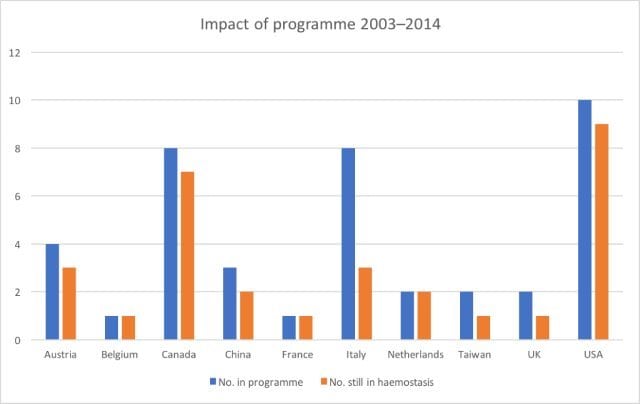Attracting doctors to low-demand specialties: A role for industry?
August 3, 2017 | Haemophilia, Medical Communications, Porterhouse Medical, med comms



One of the major problems that healthcare systems around the world face is a paucity of medically qualified staff entering particular specialties and subspecialties. This can be due to a number of reasons, such as a perceived lack of the potential for career progression, concerns over financial opportunity, the absence of drug breakthroughs to advance patient care or, perhaps, the feeling that the field is dull or unfashionable.
A US survey that has been undertaken every year since the early 1990s provides some illumination as to the specialties that residents and fellows completing their training in New York State each year regard as the most desirable. The work, undertaken by the Center for Health Workforce Studies at the State University of New York at Albany, USA, questions medics about their post-training plans and experiences finding a job. From the answers, the centre has developed a Demand Index, which ranks the relative demand for the 25 largest specialties.
The survey provides an interesting snapshot of the current interests of this cohort. In 2015, low‑demand specialties included areas such as pathology and radiology, while examples of middling‑demand specialties were gastroenterology and nephrology; high-demand specialties included family medicine and adult psychiatry. The trends are interesting too; family medicine charted a course from 19th place on the index in 2002 to the number 1 spot in 2015. It can be speculated that the focus on primary care in the USA as a means of improving access to care (and as codified in the Affordable Care Act, also known as Obamacare) was partially responsible for this increase in desirability. It will be interesting to see what impact the Trump presidency has on this trend if Obamacare is dismantled.
So, if government intervention can change attitudes towards particular specialties and effect change, is there a role for industry too?

Haemophilia
One of the specialties in which Porterhouse has worked for many years is haemophilia, a disease that finds itself in a somewhat anomalous position. Uncommon enough to classify as a rare disease, it has nevertheless received significant focus from drug companies over the past three decades, and patient need (at least in the developed world) is well served with the provision of clotting-factor concentrates that are safe and effective. In fact, over the past 5 years, the number of new industry entrants to this therapy area has grown sharply, and patients now benefit from a much wider choice of therapies, including longer-acting molecules, which hold the promise of either improved protection from bleeds or fewer infusions per week.
Despite these advantages, the low number of medically qualified candidates choosing to enter haematology, and more specifically haemostasis, remains a big challenge. The problem is particularly acute in the USA, where the majority of newly qualified haematologists tend to gravitate towards haematology-oncology. A brief glance at the programme for the major US haematology congress, held by the American Society of Hematology, tells its own story, with most sessions being dedicated to haematological malignancies such as leukaemias, lymphomas and myelomas, while haemophilia warrants just one or two sessions.
One of our clients has long recognised this issue and, with our help, set up an awards-style programme to provide funding to help encourage young haematologists to go into the care of patients with haemostatic problems rather than those with other haematological disorders. This programme was set up over 15 years ago and we recently undertook an analysis of the career pathways of the cohort who came through the programme.
From 2003 to 2014, a total of 41 young haematologists received funding through the programme, ostensibly to complete advanced training in haemostasis, as well as to undertake a hypothesis‑driven research project. This global programme attracted candidates from Austria, Belgium, Canada, China, France, Italy, the Netherlands, Taiwan, the UK and the USA. Overall, we found that 76% of the physicians who participated in the programme were still working in haemostasis today.
Interestingly, the first seven candidates from 2003 and 2004 are still active in the field and, of course, as their careers have flourished, they have reached the higher echelons of their therapy area and become the next generation of thought leaders and cheerleaders for the advantages of their chosen specialty.
The impact of this programme may be limited in scope, but it does prove the principle that industry funding, as well as government policy, can have a positive impact on recruiting young physicians into the specialties they may not immediately consider when completing their postgraduate studies.
 Author: Brian Parsons
Author: Brian Parsons
Title: Joint Managing Director
Company: Porterhouse Medical Ltd
This content was provided by Porterhouse Medical Group




